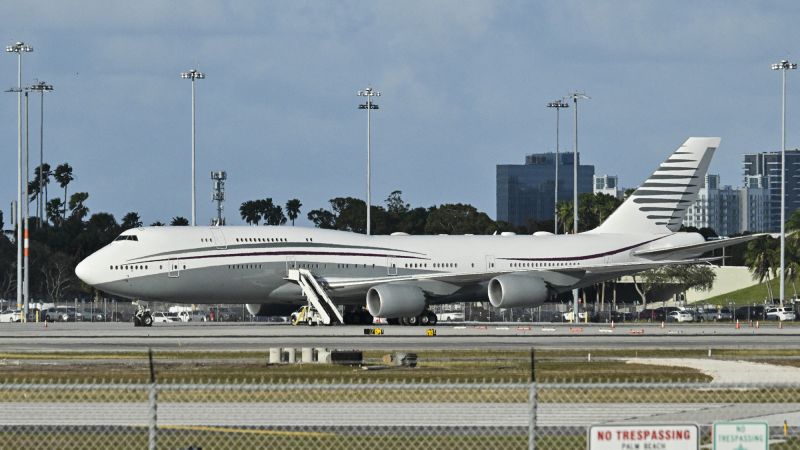The proposition of converting a luxury jet gifted by Qatar to a replacement for Air Force One has sparked considerable debate, highlighting numerous complexities in terms of security and logistical costs. Current and former officials have estimated that the retrofitting of the aircraft might incur costs in the range of hundreds of millions of dollars. Furthermore, equipping the jet with the necessary security apparatus, communication systems, and defensive capabilities could take up to two years, raising potential concerns regarding the safety and efficacy of employing the aircraft for such pivotal presidential functions.
A bipartisan agreement emerges on the inherent risks associated with using the Qatari plane. Republican Senator Ted Cruz explicitly cited significant problems relating to espionage and surveillance, emphasizing national security vulnerabilities. On the other side of the aisle, Democratic Senator Jack Reed, who serves as the ranking member of the Senate Armed Services Committee, voiced similar apprehensions, warning against the immense risks presented by granting a foreign country access to sensitive systems and communications. Such warnings underscore the gravity of the potential implications tied to this aircraft’s operational history.
In a social media announcement, former President Donald Trump claimed that the Defense Department would be the recipient of a “GIFT, FREE OF CHARGE” — a 747 intended to succeed the aging Air Force One, which has been in operation for nearly 40 years. This assertion not only raises ethics questions surrounding the value of the aircraft but also engenders serious discussions about the security of a plane that could be commandeered by the president during emergencies when continuity of government is vital. The newly proposed 747 aircraft has been appraised at approximately $400 million, although insiders suggest its actual value may be closer to $250 million. However, overhauling the aircraft to meet the presidential standards could possibly triple this valuation, leading to profound fiscal implications.
Even if the aircraft is to be used only temporarily, as Trump suggested, agencies within the U.S. government are still compelled to mitigate security vulnerabilities by effectively disassembling and reconstructing the jet with state-of-the-art communications and security systems. This restructuring process could take anywhere from several months to two years, posing significant difficulties in ensuring all requisite upgrades meet established security protocols.
In terms of logistics, the complexity escalates with the involvement of various government entities tasked with overseeing the aircraft’s retrofitting. Key players in this process include the Secret Service, the Central Intelligence Agency (CIA), the National Security Agency (NSA), and the White House Communications Agency, each playing a crucial role in ensuring that the aircraft meets stringent security requirements. A retired senior military officer articulated the necessity for thorough examination and fortification against potential electronic sabotage, highlighting the pivotal need for the president to maintain active command and military control during crisis events.
The timeline and the feasibility of such an extensive undertaking remain precariously uncertain. Concerns have arisen indicating that the White House may not fully comprehend the scope of the necessary modifications this aircraft would require, which is sure to involve the cooperation and input of numerous intelligence agencies. The costs associated with upgrading the Qatari aircraft are projected to remain within reason compared to the significant expenditures already funneled into the Air Force One upgrade initiative led by Boeing, which has been beset by delays and soaring costs, resulting in losses of up to $2.5 billion.
The transition of the jet from Qatar’s Ministry of Defense to the U.S. Defense Department has cultivated a legally intricate scenario, involving the Department of Justice and legal representatives from Qatar deliberating over complex legal frameworks. Despite the barrage of inquiries concerning security measures and operational details, a critical point remains ambiguous — namely, the timeline for the jet’s potential handover to the U.S. While a Secret Service official expressed skepticism regarding the administration’s decision to accept the jet, Qatar’s media attaché Ali Al-Ansari indicated that discussions concerning the aircraft’s temporary use as Air Force One are indeed ongoing.
Thus, the conundrum of converting a luxury gift from Qatar into a suitable alternative for Air Force One presents multifaceted challenges: financial, logistical, and, most importantly, security-related considerations that demand thorough vetting before any definitive decisions are made.



